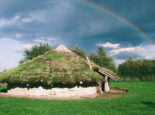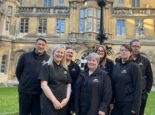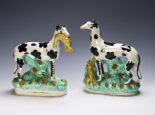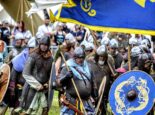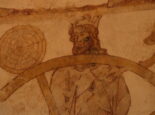Perkins is Peterborough
[prev] …pool of engineering labour and talent available and the Perkins name was already well-known and respected. Like one of the other great manufacturing partnerships originating from Peterborough, Rolls-Royce (Henry Royce having been born at Alwalton), the embryonic F Perkins Ltd, Engineers was run with Frank as the business brain and Charles the technical guru. The first engine, dubbed Vixen, was complete by December 1932. Perkins’ first years were faltering ones. The successful Wolf engine of 1934 brought in orders, but a tax on diesel fuel the following year nearly finished the company off. Instead, it managed to diversify into engines for larger trucks as well as farming, industrial and marine applications. It also came up with some novel publicity coups including installing a Wolf engine in a racing car and setting new speed records at the banked Brooklands’ circuit in Surrey. A peak speed of almost 95mph was recorded, impressive performance for any vehicle of the era, let alone something powered by a diesel. Alan Richardson, Frank Perkins’ brother-in-law and a director of the company also installed a supercharged Wolf in his personal car; by all accounts, it was capable of phenomenal acceleration from a standstill.

In 1935, Perkins diversified into engines for larger trucks as well as farming, industrial and marine applications
One of Charles’ Chapman’s greatest creations came along in 1936, with the six-cylinder P6 engine, widely regarded as years ahead of its time. Its designation was a departure from the policy of naming engines after animals but the P6 was originally titled Panther. ‘When they started to market this engine, they ran foul of the company producing Panther motorcycles,’ explains David Boulton, a member of Perkins’ Heritage Group and author of A Square Deal All Round, the comprehensive history book of the firm published in 2007. ‘So they just decided, to heck with it, we’ll call it the P6. So that’s how the engine got its very simple title, and that’s the engine that, really, was the success the company was built on.’
Then came war. From 1939 to 1945, Perkins built 12,000 engines, mainly for maritime use. To put this into perspective, from 1932 until 1936, the company had turned out just 1100. Charles developed a leviathan of an engine, the T12, designed to replace Rolls-Royce Merlin V12 petrol engines in boats so they could be diverted instead to vital aircraft such as Spitfires, Hurricanes and Lancasters.
‘We’re still not sure about where Chapman got some of his ideas from. But it was a very clever piece of design thinking’
‘To me, that’s probably the pinnacle of Charles Chapman’s designs, because it’s so different,’ says David of this 1,000 horsepower engine, which never made it past the prototype stage. ‘We’re still not sure about where he got some of his ideas from. But it was a very clever piece of design thinking.’ Charles, however, resigned from Perkins at the end of 1942, following disagreements about how some of his designs were being used. The departure of this original Perkins visionary, as well as its most experienced engineer, left a large gap in the company.
Expansion to Eastfield
During the war, it became clear that the company’s aspirations were being limited by its Queen Street premises, with expansion somewhat confined by the inconveniences of the main London to Scotland railway line on one side and a medieval cathedral on the other. Construction started on a new factory – on Perkins’ current site at Eastfield – just a… [cont]









